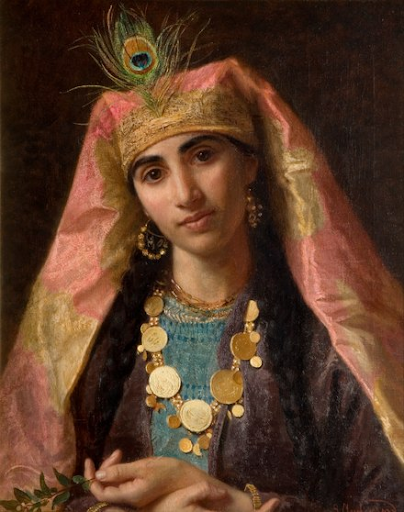
Inspired by the tale of the One thousand and one nights (or The Arabian Tales), the Russian composer Rimsky-Korsakov dedicated this symphonic suite to the central figure of the story, Scheherazade. The heroine of this saga, Scheherazade, offers to marry the Persian king Shahryar, who, after discovering his first wife’s betrayal, had decided to marry again and again, killing each of his new wives after one night of marriage. Scheherazade decides to break this chain and each night she tells a story to her husband until at dawn she interrupts the story in the middle; the curious Sultan decides to give her one more night to finish the story and Scheherazade keeps starting new stories every single night. After recounting one thousand stories, a resigned Schehearzade tells the Sultan that she has no more stories and, ready to face her death, she asks him to let her say goodbye to three children they had during the 1,001 days spent together. However, Shahryar has fallen in love with her, he decides to spare her life and to make her his queen.

The Russian composer Nikolai Rimsky-Korsakov got the idea from The Arabian Tales for a piece that he wanted both to be inspired by Middle-eastern music and to showcase several themes of “oriental” inspiration. Although his wish was not that of clearly linking specific tales from the saga to the four movements of his piece, he ultimately gave each of these movements titles inspired by the stories of Sinbad — one of the heroes of the One thousand and one nights, — by the colors of the city of Baghdad, and by Sinbad’s adventures on the Sea, which was the composer’s early passion as it reminded him of his early service as a naval admiral. The four movements are linked together by two main themes: a strong, fiery and admonishing initial theme, played in unison by the entire orchestra, that represents the scary Sultan Shahryar, ready to kill his new wife at the dawn of the new day; and the theme of Scheherazade, a delicate melody played by the violin solo and accompanied by the harps. Through the various movements both of these themes come back, over and over, reminding us of the terrible destiny that Scheherazade is bravely facing, but also of the seducing power of her storytelling that, one story at a time, slowly mitigates the ire of the king and ultimately wins over his heart.